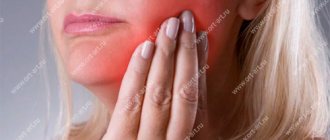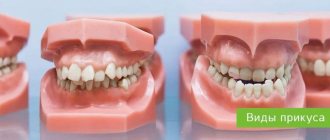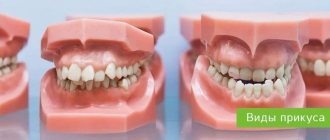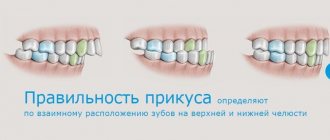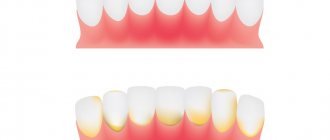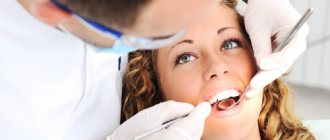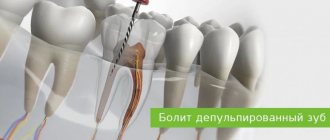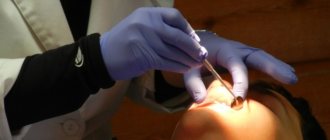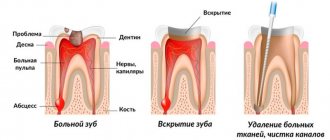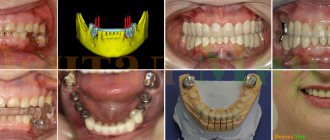Teeth or nerves?
According to statistics, more than 70% of people who experience pain in the face go to see a dentist. Moreover, most of these patients do not have disorders in the dental system, and the cause of excruciating pain is a variety of diseases of the nervous system, sinuses, eyes, temporomandibular joint, inflammatory and vascular disorders, injuries and functional disorders of the facial muscles.
Article on the topic: My head was squeezed like a helmet. Why does my head hurt, but the disease is not found?
But, unfortunately, dentists are not always able to carry out a competent diagnosis and determine the cause of pain and, instead of referring the patient to another specialist, they begin to carry out treatment on their own, which often leads to unnecessary interventions - depulping or even removing healthy teeth.
Therefore, if you have been suffering from pain in the teeth or oral cavity for years, it makes sense to see a neurologist, since this doctor has a broader outlook and more extensive knowledge than narrow specialists in certain areas (ophthalmologists, surgeons, dentists), and is more likely to be able to determine the area of violations. Diagnosis begins with a consultation, after which the doctor prescribes the necessary examinations. As a rule, to determine the causes of facial pain, magnetic resonance imaging is performed in various modes, and in order to still exclude dental diseases, cone-beam computed tomography of the dental system and others are performed.
Reveal the hidden. Who needs an MRI Read more
Facial pain
The face is an important component of a person’s image; it reflects not only our mood and success in life, but also our well-being. Therefore, the significance of pain in this part of the body is difficult to overestimate.
Unfortunately, it is not always possible to make a correct diagnosis right away, because there are many reasons for the development of facial pain. Most often, both patients and doctors sin due to dental diseases. Often the patient even loses perfectly healthy teeth in an attempt to get rid of the pain before the correct diagnosis is made.
Why does it hurt?
Attention! This article will not
facial pain caused by diseases of the ENT organs, eyes and dental system, primary headaches (migraine, tension headache, cluster headache) are described (according to the International Classification of Headache Disorders, 2004).
Patients are often concerned about trigeminal neuralgia, Tholos Hunt syndrome, and atypical facial pain.
1. For trigeminal neuralgia
pain most often occurs in the area of the second and third branches of the nerve (upper and lower jaw). The disease is characterized by severe short-term attacks of pain lasting up to 2 minutes, which are provoked by irritation of a certain area of the skin of the face or the mucous membrane of the mouth or nose. Pain can be triggered by the most ordinary events - eating cold or hot food, wiping the face with a towel, etc. Usually, after the onset of an attack, a person does not cry or scream, but freezes in place, waiting for the severe pain to subside.
The causes of neuralgia can be brain tumors, multiple sclerosis, infectious diseases (most often herpes zoster), vasoneural conflict (contact irritation of the trigeminal nerve by a nearby artery).
Neuralgia of other cranial nerves (glossopharyngeal, laryngeal, etc.) can also cause facial pain, but are extremely rare.
2. If you gradually develop symptoms such as “boring” or “gnawing” pain in the eye, redness, double vision, drooping eyelid and exophthalmos (displacement of the eyeball forward, “bulging eye”), then most likely this is a syndrome Tolosa Hunta (painful ophthalmoplegia)
. Symptoms usually get worse over a few days. There may be spontaneous improvements. Another characteristic feature of this disease is the dramatic improvement with corticosteroids.
The diagnosis of Tholos Hunt syndrome is made if all other causes have been excluded, and there are many of them: infectious diseases, tumors, vascular lesions, sarcoidosis. The causes of this disease are not fully understood; it is believed that the main mechanism of development is autoimmune.
3. Atypical facial pain
is another cause of facial pain that is a diagnosis of exclusion. When examined and questioned, patients with atypical facial pain indicate areas of pain that do not fit into any zone of innervation of the cranial nerves.
The characteristics of pain can be very different, the manifestations are disguised as diseases of the teeth, ENT organs and other diseases. Such patients often have to go through many examinations by a dentist, maxillofacial surgeon, ENT surgeon, and neurologist. Moreover, the data from these examinations do not explain the cause of facial pain.
And that's not so bad. Healthy teeth are often removed, believing that facial pain is caused by dental pathology. Another problem is that patients with this disease often suffer from depression, anxiety and other mental disorders, which makes both treatment and diagnosis difficult. Actually, these pains are considered psychogenic. Most often they are provoked by stress or some kind of mental disorder.
Surveys
For facial pain, consultations with a dentist, ENT specialist, ophthalmologist, and sometimes an oral surgeon are often required to rule out pain that is NOT caused by neurological problems.
In most cases of facial pain, it is necessary to perform an MRI (often with contrast, in various modes) of the brain to exclude tumors, multiple sclerosis, vasoneural conflicts and other pathologies.
Treatment
In most cases of facial pain, with the possible exception of Tolos Hunt syndrome (which is treated as an autoimmune disease with hormones), you will be offered anticonvulsants (eg, carbamazepine, pregabalin, topiramate) or antidepressants (amitriptyline, duloxetine). The fact is that it is these groups of drugs that are most effective in treating pain.
If there is a vasoneural conflict (for example, with trigeminal neuralgia), you may also be offered a neurosurgical operation, when a special gasket is installed between the vessel and the trigeminal nerve, which prevents the artery from irritating the trigeminal nerve. Non-medicinal methods are also very effective - acupuncture, physiotherapy, biofeedback methods, psychotherapy, etc.
In any case, do not self-diagnose or self-medicate, consult a doctor.
Be healthy!
Maria Meshcherina
Photo istockphoto.com
Long treatment
Facial and oral pain is a challenging medical problem around the world that is treated by several physicians. Sometimes patients spend a lot of time searching for the necessary specialist. Such patients are a kind of medical orphans who have been looking for their doctor for years.
Treatment of facial pain is a long process. This is due to the nature of a number of diseases, characterized by numerous exacerbations and the complexity of selecting effective therapy.
Article on the topic
When your face hurts. What is idiopathic facial pain
However, if the diagnosis is made correctly, the treatment recommended by the doctor should reduce the severity of pain and accordingly improve the patient’s quality of life. If this does not happen, be sure to contact other specialists. You shouldn't endure pain for years.
What is the facial nerve?
The trigeminal nerve, also known as the facial nerve, is the largest of the twelve cranial nerves. It originates in the ear, after which it branches, the first path reaches the frontal part, the second is located at the jaw. The nerve goes around almost the entire surface of the human face; it literally controls it.
Every person has two facial nerves - one on each side of the head. It is in contact with other cranial nerves and has supersensitive fibers.
Doctors divide the disease into two types - primary and secondary. The primary one manifests itself as a complication from a cold, in this case the normal nutrition of the nerve is disrupted. Secondary occurs with severe intoxication against the background of inflammatory or infectious diseases, as well as tumor processes.
Treatment for inflammation of the facial nerve
Drug treatment
Treatment of trigeminal neuritis is complex. The disease is first treated with medication - the patient is prescribed drugs that will alleviate the situation. These include painkillers, decongestants, vasodilators and B vitamins. Most often, the recommended medications are tablets, but you can speed up the recovery process by using ointments and gels. Sometimes doctors prescribe intramuscular injections.
In special cases, the recovery process of the facial nerve may be slowed down. Then the patient is prescribed glucocorticosteroids, which improve the metabolic processes of nervous tissue. Various biostimulants and hyaluronidases also contribute to a speedy recovery.
You cannot prescribe medications for yourself. Be sure to see a neurologist or neuropathologist at the first symptoms to determine the diagnosis and treatment strategy. Recovery medications are recommended to patients on a case-by-case basis, paying attention to the presence of chronic diseases, symptoms, and so on.
Surgery
Another way to treat the facial nerve is surgery. However, doctors turn to this option quite rarely - only when the trigeminal nerve is ruptured. Surgery is also required if there is no effect from the conservative method after six months or a year. Surgical intervention is only relevant during the first year of the presence of the disease; later, the muscles on the face irreversibly atrophy.
The surgical process involves suturing the damaged area of the facial nerve to restore its motor function.
Massage
The next treatment method is massage for the treatment of the facial nerve. The purpose of this method is to remove swelling, improve blood circulation, restore sensitivity and conduction of nerve impulses. Massage is contraindicated for tuberculosis, oncology, atherosclerosis and elevated temperature.
Initially, the massage therapist works only with the healthy side of the face, collar area, neck and area above the shoulders. Basically, the master uses rubbing, stroking, kneading and vibration.
For noticeable desired changes, it is necessary to conduct ten to twenty massage sessions from five to fifteen minutes. The duration is determined based on the degree of inflammation of the trigeminal nerve, the goals of therapy and the dynamics of recovery.
Physiotherapy
The next treatment method is physical therapy. It alleviates the severity of symptoms, helps to activate metabolic processes in tissues and restore the functions of the facial nerve.
Doctors prescribe this course of treatment from the first days of the onset of neuritis. The list of physical procedures includes:
- Ultrasound
- Laser irradiation of blood
- Electrophoresis of drugs
- Microwave therapy
- Exposure to ultra-high frequency electricity
- Ozocerite treatment
- Myoelectrostimulation
- Darsonvalization
This complex is indicated for the first week of treatment. Doctors prescribe it together with medication. This tandem helps speed up the process of restoration of the facial nerve. And its most important advantages are the absence of side effects and painlessness.
Alternative Methods
There are also alternative treatment methods. These are procedures aimed at restoring facial muscles and eliminating the symptoms of facial neuritis. Such procedures include:
- Clay or paraffin masks
- Acupuncture
- Reflexology
- Injections to eliminate muscle disorders
- Therapeutic baths
- Taping – stretching the face using adhesive plasters
- Immunosorption – purification of blood from antigens and antibodies
- Biofeedback – facial muscle training
Gymnastics for the face
Also, in conjunction with complex treatment, you can do facial exercises. Before this, you need to consult with a specialist; the doctor will draw up an individual list of exercises based on the severity of the process, location of the lesion and symptoms. Typically, such gymnastics takes about ten minutes a day.
A standard set of exercises includes relaxing and tensing individual facial muscles. For example, to restore articulation, it is recommended to pronounce the sounds “u”, “o”, “and”. Afterwards, you need to bring your lower lip under your upper teeth and reproduce the sounds “v” and “a”.
Gymnastics for inflammation of the trigeminal nerve:
- Close eyes
- Raise your eyebrows
- Frown
- Squint
- Smile with your mouth closed
- Smile with your mouth open
- Puff up your cheeks
- Pull them back
- Whistle
- Widen your nostrils
- Curl your lips
- Raise your upper lip and return to the starting position
- Lower your lower lip and return to the starting position
- Take water into your mouth
- Rinse your mouth
- Close your mouth
- Run the tip of your tongue along your gums
- Move your tongue right and left
Disease prevention
Doctors recommend eliminating effects on the body that cause inflammation of the trigeminal nerve. Here are some recommendations to help avoid illness:
- Avoid drafts and hypothermia
- Keep your head warm during the cold season
- Monitor your blood pressure
- Timely treatment of infectious and bacterial diseases
- Have a routine check-up with an oncologist
- Avoid skull and head injuries
You can sign up for an individual consultation, take tests or undergo treatment at the Medunion private clinic. You can easily make an appointment with us by calling 202-95-54 or online, directly on the website, by clicking on the “Online booking” button.
We have been working in Krasnoyarsk since 2006 and provide high-quality medical services to the population. The staff consists of highly qualified doctors of broad and narrow specialization.
